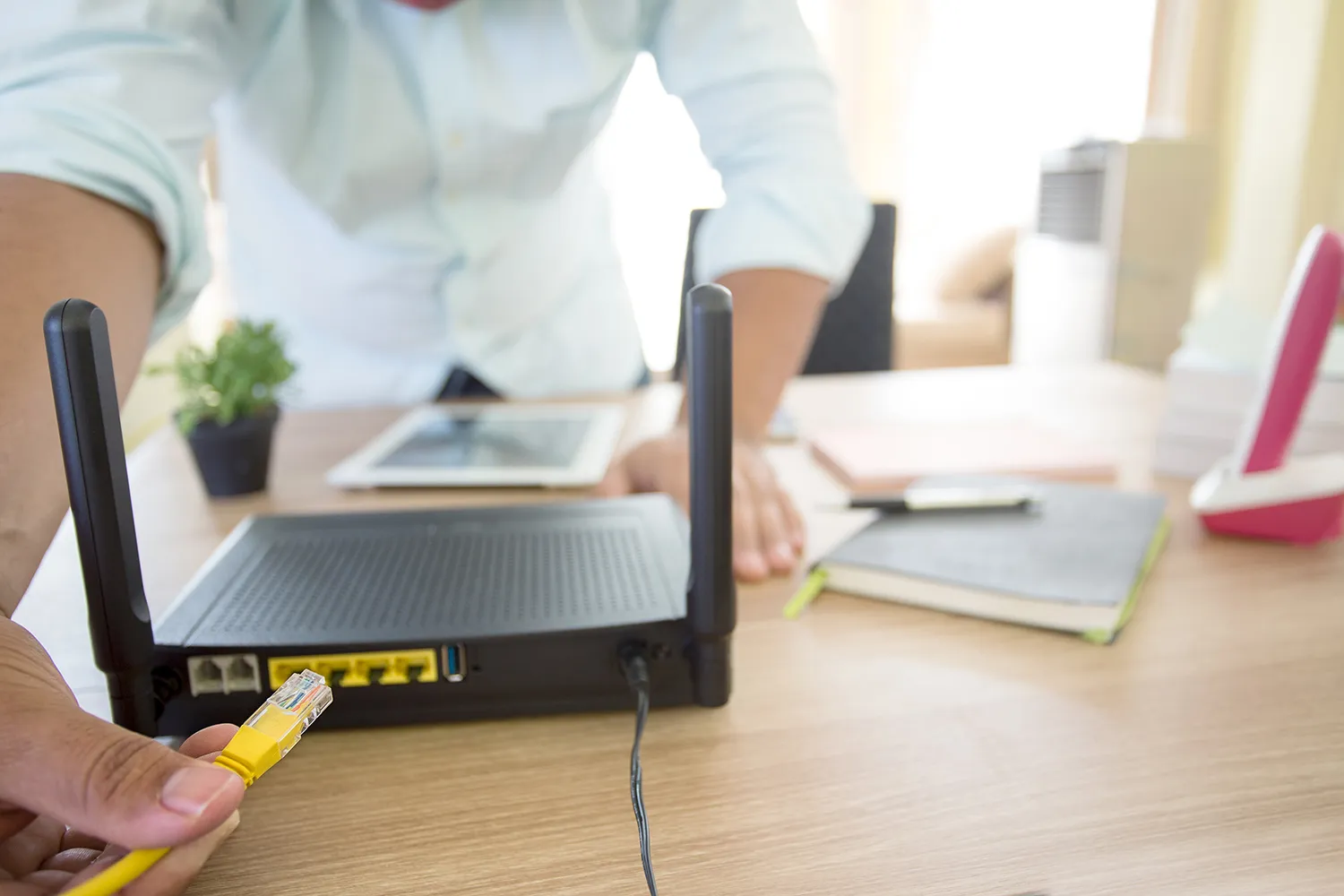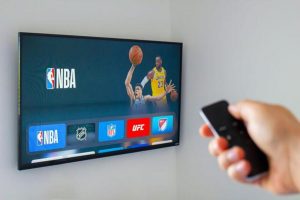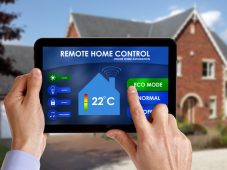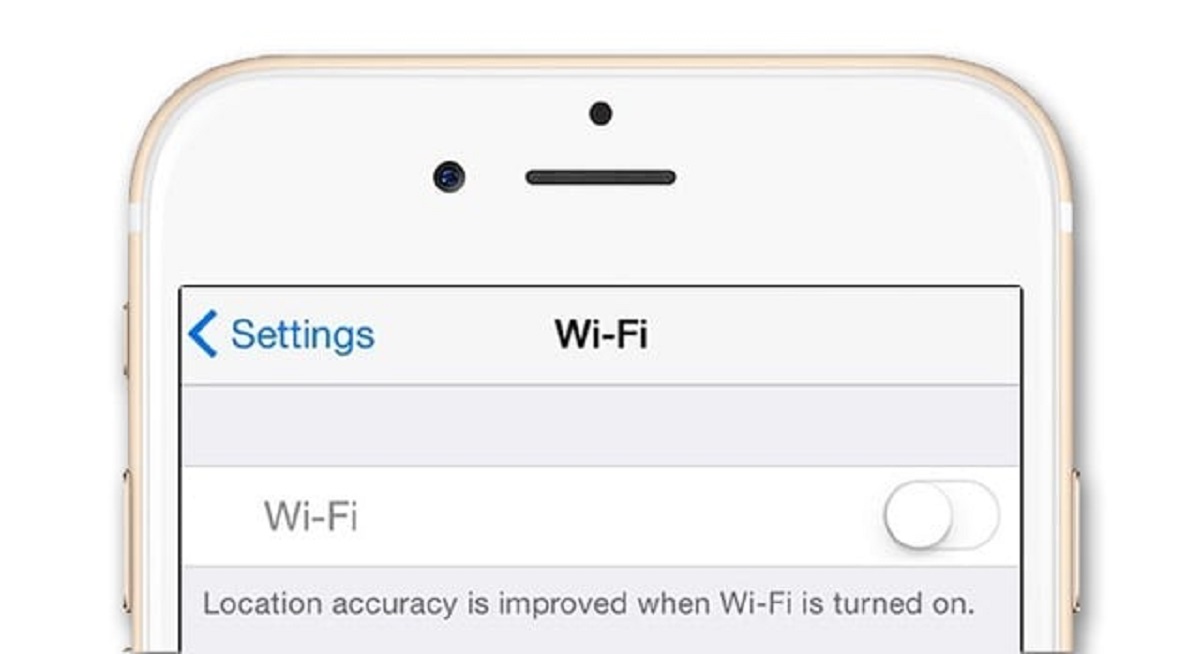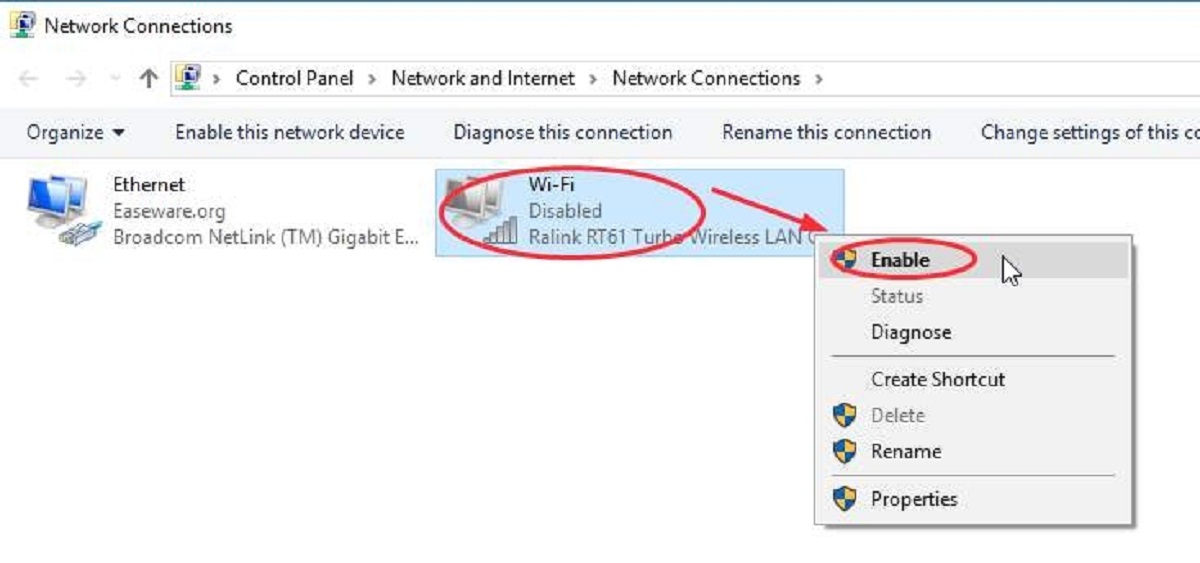Introduction
Welcome to the era of technology, where staying connected is essential for our daily lives. Whether it’s for work, entertainment, or simply keeping in touch with loved ones, a reliable Wi-Fi connection has become a necessity. So, it can be quite frustrating when you encounter Wi-Fi issues on your phone. You’re left wondering, “Why isn’t my Wi-Fi working on my phone?”
Don’t worry, you’re not alone. Many people experience Wi-Fi problems on their smartphones at some point. It can be due to various factors, ranging from simple connection problems to more complex technical issues. Understanding the possible reasons behind these Wi-Fi issues can help you troubleshoot and resolve them effectively.
In this article, we’ll explore some common reasons why your Wi-Fi may not be working on your phone and provide you with troubleshooting steps to get your Wi-Fi connection up and running smoothly again.
Before we delve into the potential causes and solutions, it’s important to note that the steps mentioned are general guidelines and may vary depending on your specific phone and router settings. So, take these suggestions as a starting point and adapt them to your situation as necessary.
Possible Reasons for Wi-Fi Issues on Your Phone
There are several factors that could contribute to Wi-Fi issues on your phone. Understanding these reasons can help you diagnose and address the problem more effectively. Here are some possible causes to consider:
- Wi-Fi Connection Problems: Sometimes, the issue may not be with your phone or router, but rather with the Wi-Fi signal itself. The distance between your phone and the router, as well as physical obstacles like walls and furniture, can weaken the signal strength and result in a poor or unstable connection.
- Network Congestion: If you’re experiencing slow Wi-Fi speeds or frequent disconnections, it could be due to a high number of devices connected to the same Wi-Fi network. This congestion can strain the network and impact its performance.
- Router Issues: Your Wi-Fi router plays a crucial role in the stability of your wireless connection. If the router is outdated, malfunctioning, or not properly configured, it can cause Wi-Fi problems on your phone.
- Incorrect Network Settings: Sometimes, incorrect network settings on your phone can prevent it from connecting to the Wi-Fi network properly. This could include issues with the Wi-Fi password, IP address settings, or DNS configurations.
- Outdated Software: Both your phone’s operating system and the router’s firmware require regular updates to ensure compatibility and optimal performance. Outdated software can lead to compatibility issues and result in Wi-Fi problems.
- Interference from Other Devices: Certain electronic devices, such as cordless phones, microwaves, or baby monitors, can interfere with the Wi-Fi signal and cause disruptions. This is especially true if these devices are in close proximity to your router or phone.
These are just a few potential reasons why your Wi-Fi may not be working well on your phone. It’s important to consider these factors when troubleshooting the issue and trying to find a solution. Now, let’s move on to the next section to explore the steps you can take to fix Wi-Fi problems on your phone.
Wi-Fi Connection Problems
One of the common reasons why Wi-Fi may not be working on your phone is due to connection problems. Here are a few factors to consider:
Distance and Obstacles: The distance between your phone and the Wi-Fi router can affect the strength of the connection. If you’re too far away, the signal may be weak, leading to poor or intermittent connectivity. Additionally, physical obstacles like walls, floors, and furniture can block or weaken the signal, reducing your Wi-Fi signal strength.
Signal Interference: Other electronic devices or appliances in your home, such as cordless phones, microwave ovens, or Bluetooth devices, can cause signal interference. These devices operate on similar frequencies as Wi-Fi, which can disrupt the Wi-Fi signal and result in connection problems.
To address these connection issues, you can take the following steps:
- Move Closer to the Router: If you’re experiencing weak Wi-Fi signals, try moving closer to the router. Being in proximity to the router can improve signal strength and provide a more stable connection.
- Remove Obstacles: If there are physical barriers between your phone and the router, try to minimize them. Move furniture or objects that may be obstructing the Wi-Fi signal and blocking its reach.
- Change Wi-Fi Channel: In some cases, there could be interference from other Wi-Fi networks in your area. To minimize this, you can log into your router’s settings and change the Wi-Fi channel. Experiment with different channels to find one that offers better signal quality and reduces interference.
- Keep Away from Interfering Devices: If you suspect that other devices are causing interference, try to keep your phone away from them. Move cordless phones, microwaves, or Bluetooth devices away from the Wi-Fi router to minimize signal disruption.
By addressing Wi-Fi connection problems, you can improve the stability and performance of your Wi-Fi connection on your phone.
Network Congestion
Network congestion can be another reason why your Wi-Fi may not be working properly on your phone. This occurs when there are too many devices connected to the same Wi-Fi network, overwhelming its capacity. Here’s how you can identify and address network congestion:
Slow Internet Speed: If you notice that your Wi-Fi connection is consistently slow, especially during peak hours, it could be a sign of network congestion. This congestion can occur in busy environments such as apartment buildings or offices where multiple devices are competing for limited bandwidth.
To alleviate network congestion, consider the following solutions:
- Limit the Number of Connected Devices: If possible, reduce the number of devices connected to the Wi-Fi network. Encourage household members or colleagues to disconnect from the network when not in use. Removing unnecessary devices can help ease the congestion and improve Wi-Fi performance on your phone.
- Upgrade Your Internet Plan: If network congestion persists despite limiting the number of connected devices, you may need to upgrade your internet plan to a higher speed or a plan with more bandwidth. Check with your internet service provider for available options that suit your needs.
- Use Quality of Service (QoS) Settings: Some routers have Quality of Service (QoS) settings that allow you to prioritize certain devices or types of network traffic. By enabling QoS, you can allocate more bandwidth to your phone or specific applications that require it, ensuring a smoother online experience.
- Schedule Downloads and Updates: If you frequently download large files or perform software updates, schedule them during off-peak hours. This can help avoid adding further strain to the network during busy times and improve the overall Wi-Fi performance on your phone.
By managing network congestion effectively, you can enhance the speed and stability of your Wi-Fi connection, providing a better browsing experience on your phone.
Router Issues
A problematic router can often be the culprit behind Wi-Fi issues on your phone. Here are some common router-related problems and troubleshooting steps to address them:
Outdated or Inadequate Router: If you’ve had your router for a long time or it’s a lower-end model, it may not be equipped to handle the demands of multiple devices or provide a reliable Wi-Fi signal. Consider upgrading to a newer, more powerful router that can better support your needs.
Router Placement: The location of your router within your home or office can significantly impact its performance. Ensure that your router is placed in a central location, away from obstructions, and elevated from the ground. This helps to optimize the Wi-Fi signal distribution and minimize interference.
Router Firmware: Outdated router firmware can lead to compatibility issues and security vulnerabilities. Visit the manufacturer’s website or refer to the router’s user manual to check for firmware updates. Install the latest firmware to improve the performance and stability of the router.
Router Configuration: Incorrect router settings can interfere with your Wi-Fi connection. Access the router’s settings by typing its IP address into a web browser and check the configuration. Ensure that the Wi-Fi settings, such as the network name (SSID) and password, are correctly set up.
Resetting the Router: If you’re still experiencing Wi-Fi issues after checking the router settings, try performing a router reset. This can help resolve temporary software glitches or conflicts. Press the small reset button on the router for 10-15 seconds until the lights blink, indicating the reset process.
Professional Help: If you’ve tried the troubleshooting steps above and are still facing router-related issues, it may be time to seek professional assistance. Contact your internet service provider or a network technician who can inspect the router and diagnose any hardware or technical issues.
By addressing router issues, you can significantly improve the performance and reliability of your Wi-Fi connection on your phone.
Incorrect Network Settings
Incorrect network settings on your phone can prevent it from properly connecting to the Wi-Fi network, resulting in connectivity issues. Here are some common network setting problems and troubleshooting steps to resolve them:
Incorrect Wi-Fi Password: Double-check that you’re entering the correct Wi-Fi password on your phone. If you’ve recently changed the password, make sure you update it on your device as well. An incorrect password will prevent your phone from connecting to the network.
IP Address Issues: Your phone’s IP address configuration can sometimes cause connectivity problems. You can try renewing the IP address by going to your phone’s Wi-Fi settings, tapping on the connected network, and selecting “Renew Lease” or “Forget Network” and connecting again. This will prompt your phone to acquire a new IP address from the router.
DNS Configuration: DNS (Domain Name System) translates website addresses into numerical IP addresses. If your phone’s DNS settings are incorrect, it can impact your ability to connect to websites. You can manually set DNS servers on your phone or choose the option to obtain DNS automatically from the router for a hassle-free connection.
Network Mode and Band Selection: Ensure that your phone is set to the correct network mode (like 2.4GHz or 5GHz) based on the capability of your router. Some routers support both frequency bands, while others only support one. Incorrect selection can lead to connection issues.
MAC Address Filtering: Some routers have MAC address filtering enabled, which means only devices with specific MAC addresses can connect to the network. Make sure your phone’s MAC address is listed as allowed in the router’s settings. You can usually find your phone’s MAC address in the Wi-Fi settings or the About Phone section of your device.
Network Provider Restrictions: In certain cases, your network provider may have configured restrictions on their network, limiting access to certain websites or services. If you’re unable to access specific websites or services on your Wi-Fi connection, contact your network provider for further assistance.
By ensuring correct network settings on your phone, you can overcome connectivity issues and enjoy a seamless Wi-Fi experience.
Outdated Software
Outdated software can often be a culprit behind Wi-Fi issues on your phone. This includes both the operating system on your phone and the firmware on your router. Here’s how outdated software can impact your Wi-Fi connection and the steps to address this:
Phone Operating System: An outdated phone operating system can lead to compatibility issues with the Wi-Fi network. Manufacturers regularly release updates that include bug fixes, security patches, and enhancements to improve the performance and stability of the device. Make sure to regularly check for and install software updates for your phone.
To update your phone’s operating system:
- Go to your phone’s settings.
- Look for the “Software Update” or “System Update” option.
- Check for any available updates and follow the prompts to install them.
Router Firmware: Just like your phone’s operating system, the firmware on your router may require updates to ensure optimal performance and compatibility with the Wi-Fi network. Router manufacturers periodically release firmware updates that provide bug fixes, security enhancements, and new features.
To update your router’s firmware:
- Visit the manufacturer’s website or access your router’s settings page.
- Locate and download the latest firmware for your router model.
- Follow the manufacturer’s instructions to update the firmware. This typically involves accessing the router’s settings page, selecting the firmware update option, and choosing the downloaded file.
Updating both your phone’s operating system and router’s firmware can address compatibility issues, improve performance, and potentially resolve Wi-Fi problems on your phone.
Interference from Other Devices
Interference from other devices can disrupt your Wi-Fi signal and cause connectivity issues on your phone. Here are some common sources of interference and steps to minimize their impact:
Electronic Devices: Devices such as cordless phones, microwave ovens, baby monitors, and Bluetooth devices operate on similar frequencies as Wi-Fi signals. When these devices are in close proximity to your router or phone, they can interfere with the Wi-Fi signal and weaken the connection.
To minimize interference from other devices:
- Location: Keep your Wi-Fi router away from other electronic devices, especially those known to cause interference. Move cordless phones and microwave ovens to different locations in your home or office to reduce interference with the Wi-Fi signal.
- Change Wi-Fi Channel: If you’re experiencing consistent interference from neighboring networks or devices, access your router’s settings and experiment with different Wi-Fi channels. Switching to a less congested channel can help minimize interference and improve your Wi-Fi connection.
- Avoid Overcrowding: In busy environments with multiple Wi-Fi networks, the available radio spectrum can become crowded, causing interference. Consider turning off or disabling unnecessary Wi-Fi networks or devices in your area to reduce congestion and improve the overall Wi-Fi performance.
Building Materials: Certain building materials such as concrete, brick, and metal can obstruct and weaken Wi-Fi signals. If your Wi-Fi router is located in a room with such materials, the signal may struggle to reach other areas of your home or office, resulting in weak connectivity.
To overcome this interference:
- Router Placement: Try relocating your Wi-Fi router to a more central location in your home or office. This can help ensure better signal coverage and minimize the impact of building materials.
- Additional Access Points: In larger homes or offices, consider using additional Wi-Fi access points or range extenders to amplify the signal and expand coverage to areas with weaker connectivity.
By addressing interference from other devices and optimizing the placement of your Wi-Fi router, you can enhance your phone’s Wi-Fi connection and minimize interruptions.
Troubleshooting Steps to Fix Wi-Fi Issues on Your Phone
When experiencing Wi-Fi issues on your phone, there are several troubleshooting steps you can take to identify and resolve the problem. Here are some effective methods to get your Wi-Fi connection back on track:
- Restart Your Phone and Router: Sometimes, a simple restart can resolve temporary software glitches. Begin by restarting your phone and then power off and on your Wi-Fi router. This can help refresh the connection and re-establish a stable connection.
- Check Wi-Fi Settings: Ensure that Wi-Fi is enabled on your phone and that it is connected to the correct Wi-Fi network. Double-check the network name (SSID) and password to ensure they are entered correctly.
- Forget Wi-Fi Network and Reconnect: From your phone’s Wi-Fi settings, forget the Wi-Fi network causing issues. Then, reconnect to the network by entering the correct password. This can help clear any temporary connection errors and establish a fresh connection.
- Verify the Router Configuration: Access your router’s settings page and verify that the Wi-Fi settings, such as network name (SSID) and password, match the settings on your phone. Additionally, check for settings related to MAC address filtering or access control and ensure that your phone is allowed to connect.
- Update Software on Your Phone and Router: Ensure that both your phone’s operating system and your router’s firmware are up to date. Check for any available updates and install them accordingly. Updating the software can resolve compatibility issues and improve the overall performance of your Wi-Fi connection.
- Check for Interference: Investigate if other devices or objects are causing interference with your Wi-Fi signal. Move away from sources of interference such as cordless phones, microwaves, or Bluetooth devices. Additionally, consider changing the Wi-Fi channel on your router to avoid crowded frequencies.
By following these troubleshooting steps, you can effectively diagnose and address Wi-Fi issues on your phone. If the problem persists after trying these methods, it may be helpful to contact your internet service provider or seek professional assistance to further investigate and resolve the issue.
Restart Your Phone and Router
One of the simplest yet often effective troubleshooting steps for Wi-Fi issues on your phone is to restart both your phone and router. This can help resolve temporary glitches or conflicts that may be impacting your Wi-Fi connection. Here’s how to do it:
Restart Your Phone:
- Press and hold the power button on your phone.
- Select the “Restart” or “Reboot” option from the on-screen menu.
- Wait for your phone to shut down and then power back on.
Restart Your Router:
- Locate the power cord of your router.
- Unplug the power cord from the router and wait for about 10-15 seconds.
- Plug the power cord back into the router.
- Wait for the router to fully restart and establish a connection, indicated by stable lights on the front panel.
Restarting your phone and router can help refresh the Wi-Fi connection and clear any temporary issues. This process allows the devices to establish a fresh connection and can often resolve common Wi-Fi problems on your phone.
If you’re still experiencing Wi-Fi issues after restarting both your phone and router, it may be necessary to try additional troubleshooting steps to identify and address the underlying cause of the problem.
Check Wi-Fi Settings
When experiencing Wi-Fi issues on your phone, it’s essential to check the Wi-Fi settings to ensure that everything is configured correctly. Here are some key aspects to consider:
Enable Wi-Fi:
Make sure that Wi-Fi is enabled on your phone. This can usually be done by going to the “Settings” menu and selecting “Wi-Fi.” If it’s already enabled, try toggling the Wi-Fi off and then back on to refresh the connection.
Select the Correct Network:
Verify that your phone is connected to the correct Wi-Fi network. Sometimes, nearby networks with similar names can cause confusion. Check the network name (SSID) and ensure that it matches the name of your intended Wi-Fi network.
Enter the Correct Password:
Double-check that you have entered the correct Wi-Fi password on your phone. A simple mistake in the password can prevent your phone from connecting to the network. If you’re unsure about the password, refer to your router’s documentation or contact your network administrator.
Wi-Fi Network Authentication:
Ensure that your Wi-Fi network is using the correct authentication method (e.g., WPA2, WPA3) that is supported by your phone. If the authentication method is outdated or incompatible with your phone, you may encounter connection issues. Access your router’s settings to verify and update the authentication settings if necessary.
Static or Dynamic IP Address:
By default, most devices are configured to obtain an IP address automatically from the router using DHCP. However, you can also manually assign a static IP address. Check your phone’s Wi-Fi settings and ensure that the IP address configuration is set to “DHCP” or “Obtain IP address automatically” unless specifically required otherwise.
By carefully reviewing and adjusting the Wi-Fi settings on your phone, you can ensure that the necessary configurations are in place for a successful and stable connection to your Wi-Fi network.
Forget Wi-Fi Network and Reconnect
If you are encountering Wi-Fi issues on your phone, forgetting the Wi-Fi network and reconnecting can often solve the problem. Sometimes, connection errors or incorrect network settings can hinder your ability to establish a stable connection. Here’s how you can forget the Wi-Fi network and reconnect on your phone:
For Android:
- Go to your phone’s “Settings” menu and select “Wi-Fi.”
- Find the Wi-Fi network that you want to forget from the list of available networks.
- Long-press on the network name and select “Forget network” or “Disconnect.”
- Once you have forgotten the network, select it again from the list of available networks.
- Enter the correct password and select “Connect” to establish a fresh connection to the Wi-Fi network.
For iPhone:
- Open the “Settings” app and select “Wi-Fi.”
- Tap the (i) icon next to the Wi-Fi network that you want to forget.
- Choose the “Forget This Network” option and confirm your action.
- Return to the Wi-Fi settings and select the same network again.
- Enter the appropriate password and tap “Join” to reconnect to the Wi-Fi network.
By forgetting the Wi-Fi network and reconnecting, your phone starts with a clean slate, allowing you to provide the correct network credentials and establish a fresh connection. This process can help resolve any temporary network configuration or connection issues.
If the issue persists after reconnecting, you may need to consider other troubleshooting steps to further diagnose and address the Wi-Fi problem on your phone.
Verify the Router Configuration
When experiencing Wi-Fi issues on your phone, it’s important to verify the configuration settings on your router. Incorrect settings can create barriers to a stable and successful Wi-Fi connection. Here are some key aspects to consider when checking the router configuration:
Wi-Fi Network Name (SSID):
Confirm that the network name (SSID) on your router matches the one displayed on your phone. A mismatch in the network name can prevent your phone from connecting to the correct Wi-Fi network. Access your router’s settings and ensure that the SSID is correctly configured.
Wi-Fi Password:
Double-check the Wi-Fi password set on your router. If you have recently changed the password, make sure to update it on your phone as well. An incorrect Wi-Fi password can prevent your phone from establishing a successful connection. Verify that the password you enter on your phone matches the one set on your router.
MAC Address Filtering:
Some routers have MAC address filtering enabled, allowing only devices with specific MAC addresses to connect to the network. Check if MAC address filtering is enabled on your router and ensure that your phone’s MAC address is listed as a permitted device. You can usually find your phone’s MAC address in the Wi-Fi settings on your phone or the About Phone section.
Wireless Security Protocol:
Ensure that your router is using the appropriate wireless security protocol (e.g., WPA2, WPA3) that is compatible with your phone. Outdated or mismatched security protocols can result in connection issues. Access your router’s settings and verify that the correct security protocol is selected.
Router Placement:
Consider the physical placement of your router within your home or office. The location can impact the Wi-Fi signal and its coverage. Ensure that the router is placed in a central location, away from obstructions, and elevated from the ground. This helps to optimize the Wi-Fi signal and maximize coverage.
If any of the router configuration settings are incorrect or need adjustment, access your router’s settings page to make the necessary changes. Following these steps can ensure that your router is properly configured for a reliable and stable Wi-Fi connection on your phone.
Update Software on Your Phone and Router
Keeping the software on your phone and router up to date is crucial for maintaining a stable and secure Wi-Fi connection. Outdated software can lead to compatibility issues and potentially cause Wi-Fi problems on your phone. Here’s how you can update the software on both your phone and router:
Update Phone Software:
Regularly checking for and installing updates for your phone’s operating system is important to ensure optimal performance and compatibility with Wi-Fi networks. Here’s how to update the software on your phone:
- Go to your phone’s “Settings” menu.
- Scroll down and select “Software Update” or “System Update”.
- Your phone will check for any available updates.
- If an update is found, follow the on-screen instructions to download and install it.
- After the update is installed, restart your phone to complete the process.
Update Router Firmware:
Router firmware updates are released periodically by manufacturers to improve performance, security, and compatibility with Wi-Fi devices. Here’s how you can update the firmware on your router:
- Visit the manufacturer’s website for your router model.
- Locate the firmware update section and download the latest firmware file.
- Access your router’s settings by typing the router’s IP address into a web browser.
- Navigate to the firmware update section, usually found under “Administration” or “Advanced Settings”.
- Select the firmware update file you downloaded and follow the on-screen instructions to install it.
- Allow the router to restart and apply the firmware update.
By updating both the software on your phone and the firmware on your router, you ensure that they are equipped with the latest features, bug fixes, and security patches. This helps to improve compatibility, stability, and overall Wi-Fi performance on your phone.
Check for Interference
Interference from other devices can disrupt the Wi-Fi signal and cause connectivity issues on your phone. Identifying and minimizing sources of interference can significantly improve your Wi-Fi experience. Here are some steps to check for and mitigate interference:
1. Nearby Electronic Devices:
Devices such as cordless phones, microwave ovens, baby monitors, and Bluetooth devices can operate on the same frequency as Wi-Fi signals, leading to interference. Move these devices away from your router or your phone to reduce signal disruption.
2. Wi-Fi Channel Congestion:
Neighboring Wi-Fi networks operating on the same channel can cause interference, especially in densely populated areas. Access your router’s settings and navigate to the Wi-Fi channel selection. Experiment with different channels to find the one with the least congestion and better signal quality.
3. Placement of Router:
The physical location of your router can impact its signal strength and coverage. Place the router in a central location, away from obstructions like walls or furniture. Elevating the router off the ground can also help improve signal distribution and reduce interference.
4. Wi-Fi Range Extenders:
If your Wi-Fi signal is weak in certain areas of your home or office, consider using Wi-Fi range extenders or mesh systems. These devices can boost the signal strength and expand Wi-Fi coverage, reducing the impact of interference in those problematic areas.
5. Wi-Fi Analyzer Apps:
Use Wi-Fi analyzer apps on your phone to detect and visualize the Wi-Fi networks and their signal strengths around you. These apps can help you identify crowded channels or interference sources so that you can make informed decisions about adjusting your router’s settings for better connectivity.
6. Router Positioning:
Experiment with different router positions to find the optimal placement. Minor adjustments can sometimes make a significant difference in signal strength and reduce interference. Try different angles, orientations, or using external antennas, if available, to find the best position for your router.
By checking for interference and implementing these measures, you can enhance the stability and performance of your Wi-Fi connection on your phone. Minimizing interference allows for a smoother online experience and fewer disruptions in connectivity.
Conclusion
Wi-Fi issues on your phone can be frustrating, but by understanding the possible reasons and implementing effective troubleshooting steps, you can resolve these problems and regain a stable Wi-Fi connection. Throughout this article, we have explored various potential causes of Wi-Fi issues, including connection problems, network congestion, router issues, incorrect network settings, outdated software, and interference from other devices.
To address these issues, we have discussed troubleshooting steps such as restarting your phone and router, checking Wi-Fi settings, forgetting and reconnecting to the network, verifying router configuration, updating software on your phone and router, and checking for interference. These steps can help you diagnose and resolve the most common Wi-Fi problems on your phone.
Remember, these troubleshooting steps serve as general guidelines and may vary depending on your specific phone and router settings. It’s important to adapt them to your situation and reach out to your internet service provider or a network technician for further assistance if needed.
By following the suggested troubleshooting steps and maintaining a proactive approach to your Wi-Fi network’s performance, you can ensure a stable and reliable Wi-Fi connection on your phone. Stay connected, browse seamlessly, and enjoy all the benefits of a robust wireless network.







